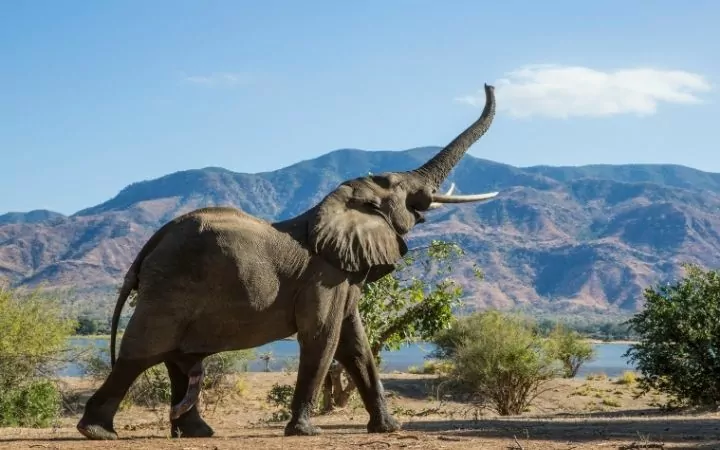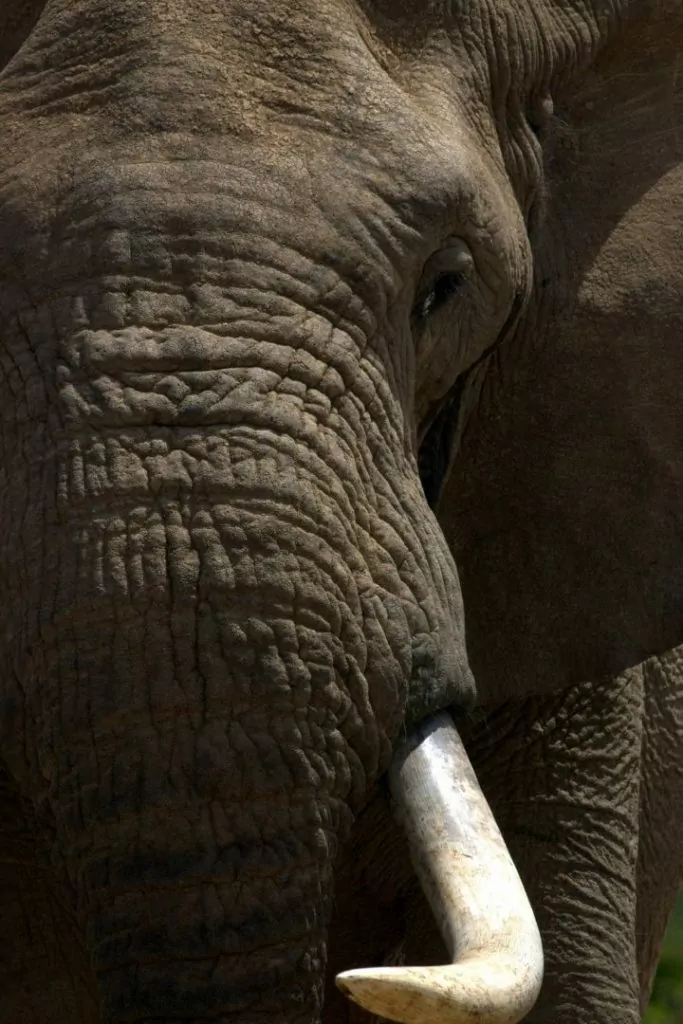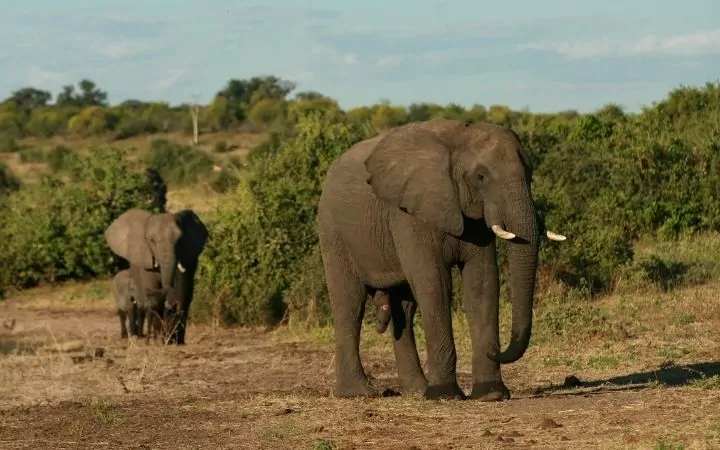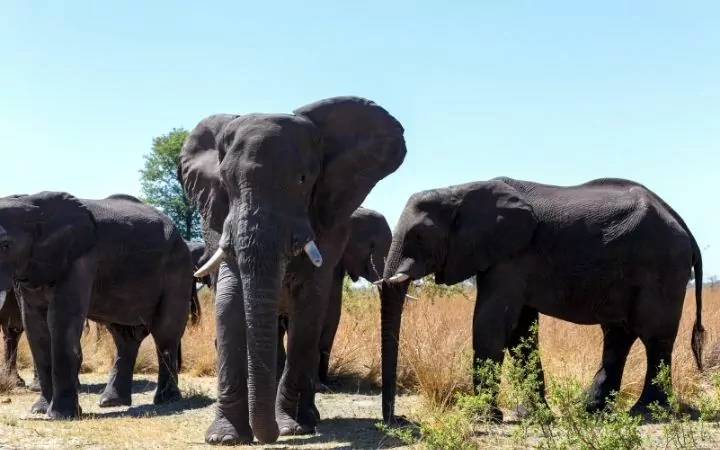Today we will be unpacking elephant musth. Elephants are a fan favorite when it comes to animals. Not only are they adorable, and smart but they also represent good luck.
They do exhibit some interesting behaviors that many people are unaware of. One, in particular, is when elephants are in musth. Read on to learn more about it.
Defining Musth in Elephants

Elephants have an intricate social dynamic, and there is still much to learn about their behavior. Musth (pronounced must in English) is a hormonal cycle that naturally occurs in healthy adult bulls (male elephants that reached adulthood). It involves a rapid rise in reproductive hormones that causes them to feel more restless, aggressive, and energetic.
Musth involves the secretion of a hormone called Temporin that comes from the temporal gland. This is exhibited through drainage down their face out of the temporal gland. It also is characterized by the constant trickle of urine down the elephant’s legs.
The Duration and Behaviour Associated with Musth in Elephants
Bulls that go into musth are considered healthy. The environment the bull is in can help determine the length of musth the elephant will have. Typically musth comes in three stages:
- Pre musth
- Peak musth
- Post musth
The length of musth varies but typically lasts between two to three months, depending on the bull’s health. For example, bulls who have nutritious food readily available often stay in musth for more extended periods of time.
Elephants who are in captivity and do not have access to good food (resulting in a decline in health) can go into musth much less frequently.
Bulls in musth exhibit specific behaviors showing high energy, unpredictability, and aggression. This is due to the high levels of testosterone in their systems. This is the main reason that it is rare to see bulls in herds.
The secretion of testosterone releases a strong pheromone and is extremely pungent. They also walk with a purpose and are defined to have a swagger. The purpose of all of these characteristics is to promote themselves as bigger, stronger, and better than the next male elephant so they can attract a mate.
How Do Vets Take Care of Bull Elephants in Musth?

It is essential to know that when bulls are in musth, veterinarians and observers must exhibit the utmost caution. This is to avoid any injury to themselves or the elephants due to the natural aggression elephants have during this time. This is what makes the knowledge base on it so scarce.
Obviously, veterinarians only treat elephants who are in captivity. Many of these animals are in captivity due to extreme conditions that left them requiring extra care. For those elephants, it’s crucial the veterinarian and staff are aware when the bulls are in musth to be able to look out for particular activities.
Veterinarians can examine and treat these bulls by using what is known as a protective contract (PC). The elephants and vets are separated by a specially designed wall known as a protective contact wall. Positive reinforcement with treats and target training are two techniques that are used to help treat the elephants in a safe manner.
When bulls are in musth, the veterinarian must keep a proper eye for any change in behavior that may indicate a decline in health. The bull’s diet should be adjusted to avoid any high-calorie food and should be offered fresh water daily to stay hydrated.
The Frequency of Elephant Musth
As stated above, there is limited information of when exactly an elephant goes into musth. This is because they are generally aggressive, which makes it hard to do safe research. That being said, it is assumed that around 20 years of age, bulls will go into musth.
Musth has been said to last for two to three months, with each stage coming in either three to four-week intervals or four to five-week cycles. Depending on the bull’s physical health status will determine how often and how long musth lasts. It is usually an annual occurrence, but it can be affected by the elephant’s health status and environment.
The Relation of the Temporal Gland to Elephant Musth

One of the key characteristics of musth is a bull secreting temporin from its temporal gland. The temporal gland is located on the elephant’s head between the eye and ear. Situated on the gland is a tiny area where the hormone trickles out of and down the elephant’s face.
10 Interesting Facts About Bull Elephants in Musth
- Elephants must eat a very nutritious diet while in musth in order to stay in it.
- The gland inside the bulls skull puts pressure on the eye socket resulting in pain. This is what experts assume causes aggressive behavior.
- Musth is Sanskrit for intoxicated.
- The temporal gland can weigh up to 3kg.
- During musth, the constant dribble of urine will stain the penile sheath a pale green.
- A bull in musth will have testosterone levels 60x more significant than a bull not in musth.
- Bulls that have received a vasectomy still go into musth as it does not affect the hormonal changes in the body.
- Elephants testicles are located nestled up in their bodies, making castration very difficult.
- Humans can smell the temporin as it is a robust and distinctive odor.
- Bulls can continue to go into musth until they are 55-60 years old.
Bull Elephants as Role Models to Teenage Elephants

Let’s face it teenagers going through puberty are unpredictable, which makes positive role models so important. This is no different for elephants. Young bulls coming into their first musth can be dangerous.
They can form clusters where they go around showing aggressive behavior and injure other animals. The danger lies not only to other animals but from bull to bull. They often can get so aggressive with each other that they will fight to the death.
When young bulls are all along the same line, they do not back down to each other but instead, act in groups and attack each other. When they meet a larger, older bull, they will drop out of musth because they know they cannot compete.
So with the absence of these older bull elephants, the younger ones do not have anyone to keep them in check. Obviously, there is no control on the rank and amount of elephants in different age groups in the wild.
However, in captivity, a better range of age is vital to keep an artificial power on it.
Summary
Elephants are a fantastic animal that can teach us so much about social behavior. As we continue to research and study them, we realize there are many similarities between them and us.
For example, we need good role models and often pee down our legs. Kidding about the second part, but you get the picture.
If you enjoyed this article, why not read our blog article on Interesting Facts About Dogs.
